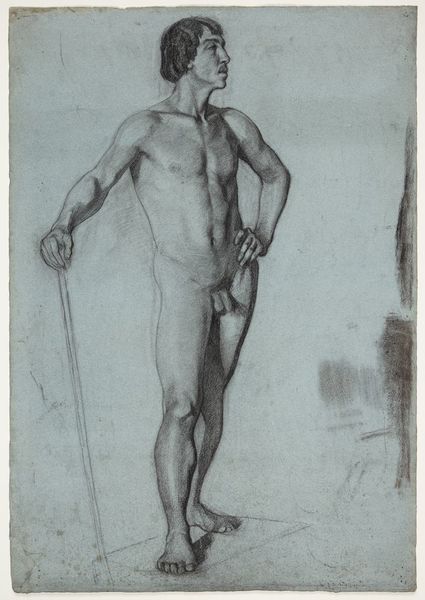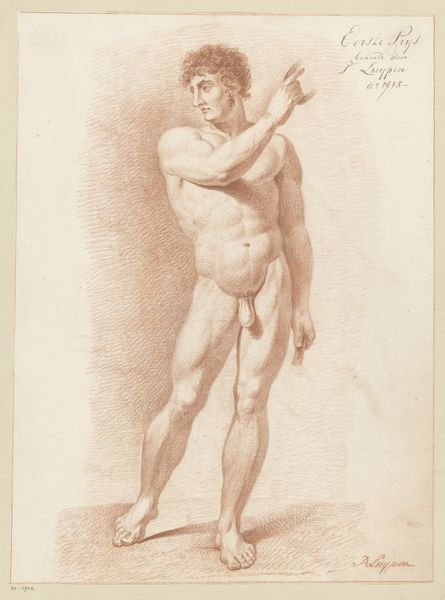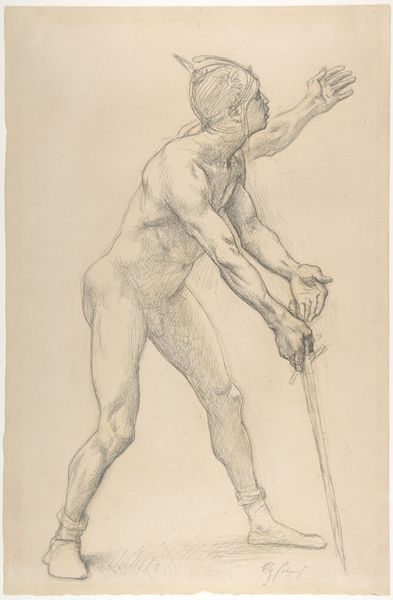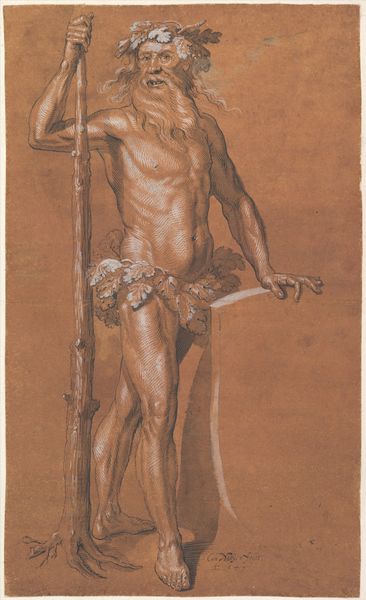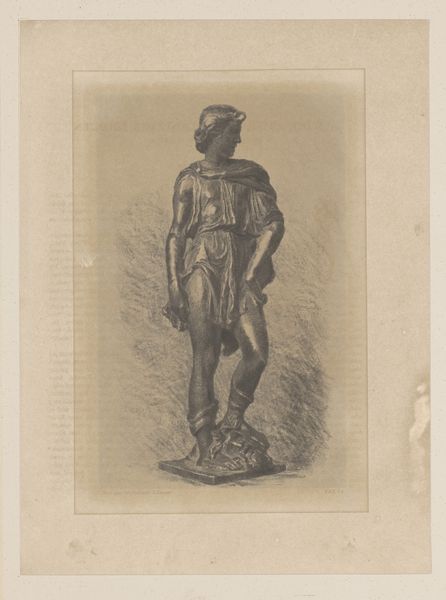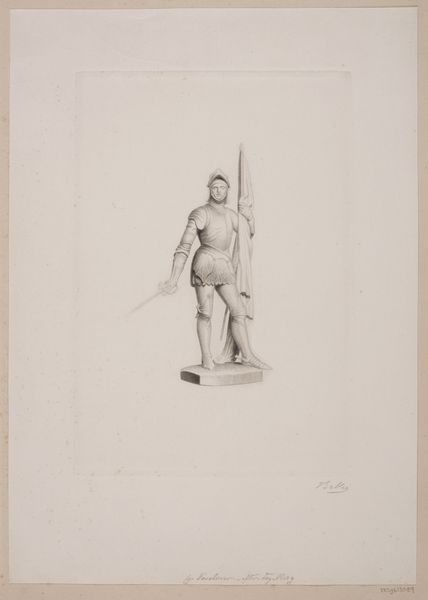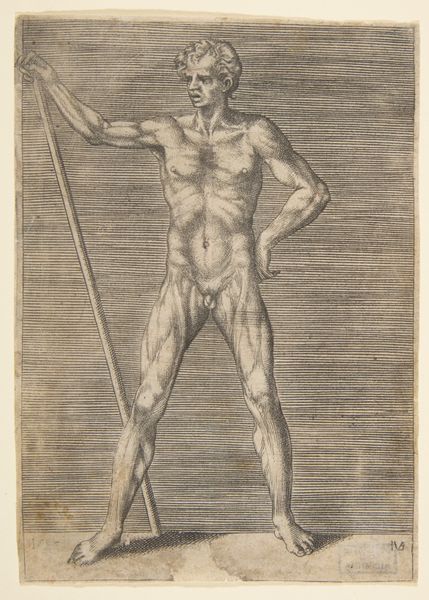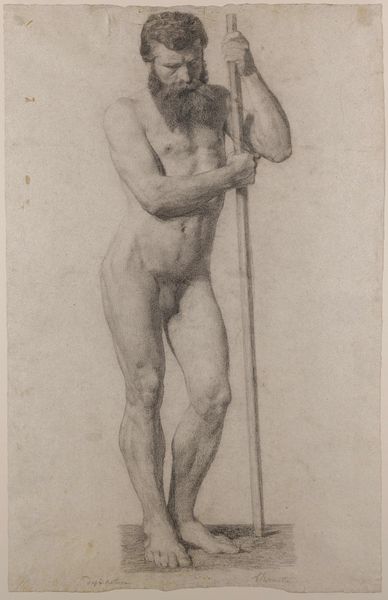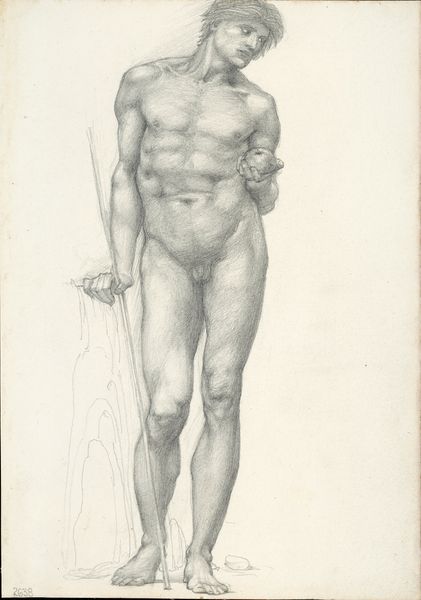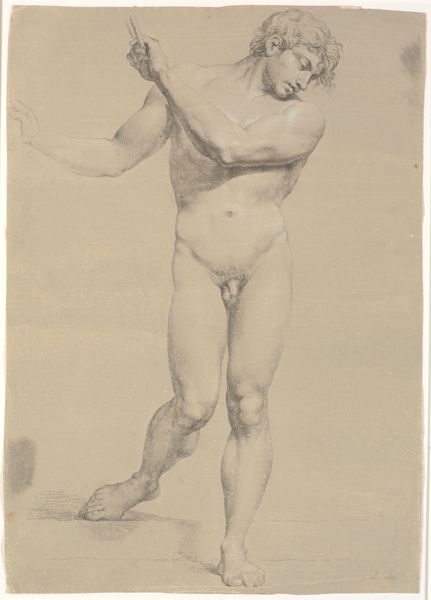
drawing, pencil, charcoal
#
portrait
#
drawing
#
classical-realism
#
charcoal drawing
#
pencil drawing
#
pencil
#
portrait drawing
#
charcoal
#
history-painting
#
academic-art
#
nude
Dimensions: sheet: 61.6 × 48.26 cm (24 1/4 × 19 in.)
Copyright: National Gallery of Art: CC0 1.0
John Vanderlyn made this drawing, "Study for The Landing of Columbus," at some point in his career, using graphite and wash on paper. Vanderlyn was an American artist working in the neoclassical style, and he trained in Paris at a time when French artists dominated Western art. This study speaks to the role of the artist in shaping collective memory. Consider that Vanderlyn’s preparatory study was for a monumental painting that would eventually hang in the U.S. Capitol building. This places the artwork within a very specific institutional context, laden with political implications. Vanderlyn's classical style and idealized figures evoke a sense of heroism, which can be seen as a visual code that celebrates Columbus and his exploits. Art history helps us look critically at these past representations of history, questioning what they tell us about the social and political values of their own time. By considering the art market, exhibition practices, and critical reception, we can begin to understand the complex relationship between art, power, and ideology.
Comments
No comments
Be the first to comment and join the conversation on the ultimate creative platform.
